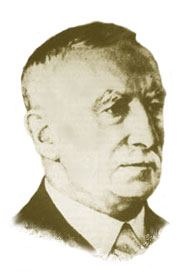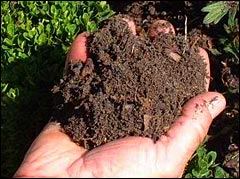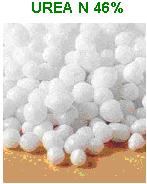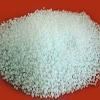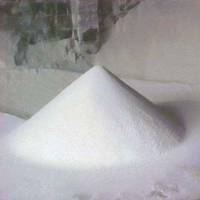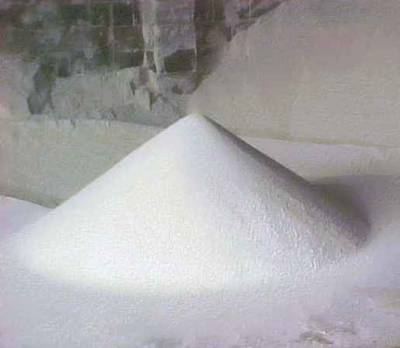jumpincactus
Premium Member
Supporter
- 11,609
- 438
Bit of trivia on commercial ferts I wasnt aware of. The fertilizer industry really took off after the end of WWII as ammoniacal nitrogen was used in munitions manufacturing. When the war ended they needed to find a way to utilize the already in place facilites from weapons manufacturing to start supplying the US and world with N for cereal crop use.
In my quest to find data that looks in depth at studies on how synthetic fertz may or may not harm soil microbes I stumbled upon this paper,
I have long believed that any present studies found around the interweb are typically funded and performed /contracted by BigAg and more times than not the results are manipulated to BigAgs favor. Here is the link for the entire paper.
https://dl.sciencesocieties.org/publications/jeq/articles/38/6/2295
Here is a teaser from the conclusion of the study.
Snippet for conclusion statement in study below.
The present paper and a companion study by Khan et al. (2007) provide many such data sets that encompass a variety of cereal cropping and management systems in different parts of the world. Overwhelmingly, the evidence is diametrically opposed to the buildup concept and instead corroborates a view elaborated long ago by White (1927) and Albrecht (1938) that fertilizer N depletes soil organic matter by promoting microbial C utilization and N mineralization. An inexorable conclusion can be drawn: The scientific basis for input-intensive cereal production is seriously flawed. The long-term consequences of continued reliance on current production practices will be a decline in soil productivity that increases the need for synthetic N fertilization, threatens food security, and exacerbates environmental degradation.
Here is another great paper that was based of data using the Morrow plots in Illinois in its entirety.
“Fertilizer is good for the father and bad for the sons.”
For all of its ecological baggage, synthetic nitrogen does one good deed for the environment: it helps build carbon in soil. At least, that’s what scientists have assumed for decades.
If that were true, it would count as a major environmental benefit of synthetic N use. At a time of climate chaos and ever-growing global greenhouse gas emissions, anything that helps vast swaths of farmland sponge up carbon would be a stabilizing force. Moreover, carbon-rich soils store nutrients and have the potential to remain fertile over time–a boon for future generations.
The case for synthetic N as a climate stabilizer goes like this. Dousing farm fields with synthetic nitrogen makes plants grow bigger and faster. As plants grow, they pull carbon dioxide from the air. Some of the plant is harvested as crop, but the rest–the residue–stays in the field and ultimately becomes soil. In this way, some of the carbon gobbled up by those N-enhanced plants stays in the ground and out of the atmosphere.
Well, that logic has come under fierce challenge from a team of University of Illinois researchers led by professors Richard Mulvaney, Saeed Khan, and Tim Ellsworth. In two recent papers (see here and here) the trio argues that the net effect of synthetic nitrogen use is to reduce soil’s organic matter content. Why? Because, they posit, nitrogen fertilizer stimulates soil microbes, which feast on organic matter. Over time, the impact of this enhanced microbial appetite outweighs the benefits of more crop residues.
And their analysis gets more alarming. Synthetic nitrogen use, they argue, creates a kind of treadmill effect. As organic matter dissipates, soil’s ability to store organic nitrogen declines. A large amount of nitrogen then leaches away, fouling ground water in the form of nitrates, and entering the atmosphere as nitrous oxide (N2O), a greenhouse gas with some 300 times the heat-trapping power of carbon dioxide. In turn, with its ability to store organic nitrogen compromised, only one thing can help heavily fertilized farmland keep cranking out monster yields: more additions of synthetic N.
The loss of organic matter has other ill effects, the researchers say. Injured soil becomes prone to compaction, which makes it vulnerable to runoff and erosion and limits the growth of stabilizing plant roots. Worse yet, soil has a harder time holding water, making it ever more reliant on irrigation. As water becomes scarcer, this consequence of widespread synthetic N use will become more and more challenging.
In short, “the soil is bleeding,” Mulvaney told me in an interview.
If the Illinois team is correct, synthetic nitrogen’s effect on carbon sequestration swings from being an important ecological advantage to perhaps its gravest liability. Not only would nitrogen fertilizer be contributing to climate change in a way not previously taken into account, but it would also be undermining the long-term productivity of the soil.
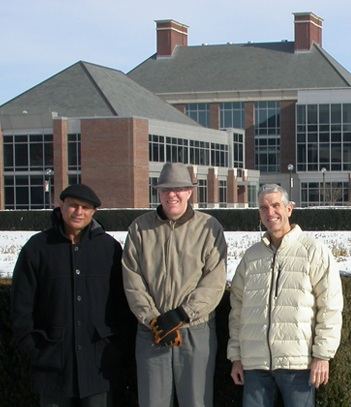 Getting their hands dirty: Saeed Khan, Richard Mulvaney, and Tim Ellsworth (l.-r.), in front of the Morrow Plots, University of Illinois.An Old Idea Germinates Anew
Getting their hands dirty: Saeed Khan, Richard Mulvaney, and Tim Ellsworth (l.-r.), in front of the Morrow Plots, University of Illinois.An Old Idea Germinates Anew
While their research bucks decades of received wisdom, the Illinois researchers know they aren’t breaking new ground here. “The fact is, the message we’re delivering in our papers really is a rediscovery of a message that appeared in the ’20s and ’30s,” Mulvaney says. In their latest paper, “Synthetic Nitrogen Fertilizers Deplete Soil Nitrogen: A Global Dilemma for Sustainable Cereal Production,” which appeared last year in the Journal of Environmental Quality, the researchers point to two pre-war academic papers that, according to Mulvaney, “state clearly and simply that synthetic nitrogen fertilizers were promoting the loss of soil carbon and organic nitrogen.”
That idea also appears prominently in The Soil and Health(1947), a founding text of modern organic agriculture. In that book, the British agronomist Sir Albert Howard stated the case clearly:
The use of artificial manure, particularly [synthetic nitrogen] … does untold harm. The presence of additional combined nitrogen in an easily assimilable form stimulates the growth of fungi and other organisms which, in the search for organic matter needed for energy and for building up microbial tissue, use up first the reserve of soil humus and then the more resistant organic matter which cements soil particles.
In other words, synthetic nitrogen degrades soil.
That conclusion has been current in organic-farming circles since Sir Albert’s time. In an essay in the important 2002 anthology Fatal Harvest Reader, the California organic farmer Jason McKenney puts it like this:
Fertilizer application begins the destruction of soil biodiversity by diminishing the role of nitrogen-fixing bacteria and amplifying the role of everything that feeds on nitrogen. These feeders then speed up the decomposition of organic matter and humus. As organic matter decreases, the physical structure of soil changes. With less pore space and less of their sponge-like qualities, soils are less efficient at storing water and air. More irrigation is needed. Water leeches through soils, draining away nutrients that no longer have an effective substrate on which to cling. With less available oxygen the growth of soil microbiology slows, and the intricate ecosystem of biological exchanges breaks down.
Although those ideas flourished in organic-ag circles, they withered to dust among soil scientists at the big research universities. Mulvaney told me that in his academic training — he holds a PhD in soil fertility and chemistry from the University of Illinois, where he is now a professor in the Department of Natural Resources and Environmental Sciences — he was never exposed to the idea that synthetic nitrogen degrades soil. “It was completely overlooked,” he says. “I had never heard of it, personally, until we dug into the literature.”
What sets the Illinois scientists apart from other critics of synthetic nitrogen is their provenance. Sir Albert’s denouncement sits in a dusty old tome that’s pretty obscure even within the organic-agriculture world; Jason McKenney is an organic farmer who operates near Berkeley–considered la-la land by mainstream soil scientists. Both can be — and, indeed have been — ignored by policymakers and large-scale farmers. By contrast, Mulvaney and his colleagues are living, credentialed scientists working at the premier research university in one of the nation’s most prodigious corn-producing–and nitrogen-consuming –states.
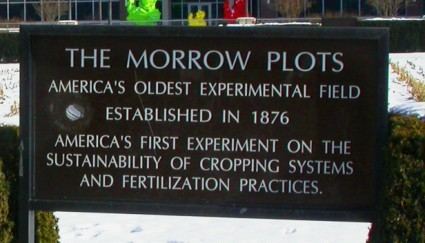 Abandon all hope, all fertilizer execs who enter here.The Dirt on Nitrogen, Soil, and Carbon
Abandon all hope, all fertilizer execs who enter here.The Dirt on Nitrogen, Soil, and Carbon
To come to their conclusions, the researchers studied data from the Morrow plots on the University of Illinois’ Urbana-Champaign campus, which comprise the “the world’s oldest experimental site under continuous corn” cultivation. The Morrow plots were first planted in 1876.
Mulvaney and his collaborators analyzed annual soil-test data in test plots that were planted with three crop rotations: continuous corn, corn-soy, and corn-oats-hay. Some of the plots received moderate amounts of fertilizer application; some received high amounts; and some received no fertilizer at all. The crops in question, particularly corn, generate tremendous amounts of residue. Picture a Midwestern field in high summer, packed with towering corn plants. Only the cobs are harvested; the rest of the plant is left in the field. If synthetic nitrogen use really does promote carbon sequestration, you’d expect these fields to show clear gains in soil organic carbon over time.
Instead, the researchers found, all three systems showed a “net decline occurred in soil [carbon] despite increasingly massive residue [carbon] incorporation.” (They published their findings,“The Myth of Nitrogen Fertilization for Soil Carbon Sequestration,” in the Journal of Environmental Quality in 2007.) In other words, synthetic nitrogen broke down organic matter faster than plant residue could create it.
A particularly stark set of graphs traces soil organic carbon (SOC) in the surface layer of soil in the Morrow plots from 1904 to 2005. SOC rises steadily over the first several decades, when the fields were fertilized with livestock manure. After 1967, when synthetic nitrogen became the fertilizer of choice, SOC steadily drops.
In their other major paper, “Synthetic Nitrogen Fertilizers Deplete Soil Nitrogen: A Global Dilemma for Sustainable Cereal Production” (2009), the authors looked at nitrogen retention in the soil. Given that the test plots received annual lashings of synthetic nitrogen, conventional ag science would predict a buildup of nitrogen. Sure, some nitrogen would be removed with the harvesting of crops, and some would be lost to runoff. But healthy, fertile soil should be capable of storing nitrogen.
In fact, the researchers found just the opposite. “Instead of accumulating,” they wrote, “soil nitrogen declined significantly in every subplot sampled.” The only explanation, they conclude, is that the loss of organic matter depleted the soil’s ability to store nitrogen. The practice of year-after-year fertilization had pushed the Morrow plots onto the chemical treadmill: unable to efficiently store nitrogen, they became reliant on the next fix.
The researchers found similar data from other test plots. “Such evidence is common in the scientific literature but has seldom been acknowledged, perhaps because N fertilizer practices have been predicated largely on short-term economic gain rather than long-term sustainability,” they write, citing some two dozen other studies which mirrored the patterns of the Morrow plots.
The most recent bit of evidence for the Mulvaney team’s nitrogen thesis comes from a team of researchers at Iowa State University and the USDA. In a 2009 paper (PDF), this group looked at data from two long-term experimental sites in Iowa. And they, too, found that soil carbon had declined after decades of synthetic nitrogen applications. They write: “Increases in decay rates with N fertilization apparently offset gains in carbon inputs to the soil in such a way that soil C sequestration was virtually nil in 78% of the systems studied, despite up to 48 years of N additions.”
 Fertile ground for research: the Morrow Plots at the University of Illinois.Photo:brianholsclawSlinging Dirt
Fertile ground for research: the Morrow Plots at the University of Illinois.Photo:brianholsclawSlinging Dirt
Mulvaney and Khan laughed when I asked them what sort of response their work was getting in the soil-science world. “You can bet the fertilizer industry is aware of our work, and they aren’t too pleased,” Mulvaney said. “It’s all about sales, and our conclusions aren’t real good for sales.”
As for the soil-science community, Mulvaney said with a chuckle, “the response is still building.” There has been negative word-of-mouth reaction, he added, but so far, only two responses have been published: a remarkable fact, given that the first paper came out in 2007.
Both published responses fall into the those-data-don’t-say-what-you-say-they category. The first, published as a letter to the editor (PDF) in the Journal of Environmental Quality,came from D. Keith Reid, a soil fertility specialist with the Ontario Ministry of Agriculture, Food and Rural Affairs. Reid writes that the Mulvaney team’s conclusion about synthetic nitrogen and soil carbon is “sensational” and “would be incredibly important if it was true.”
Reid acknowledges the drop in soil organic carbon, but argues that it was caused not by synthetic nitrogen itself, but rather by the difference in composition between manure and synthetic nitrogen. Manure is a mix of slow-release organic nitrogen and organic matter; synthetic nitrogen fertilizer is pure, readily available nitrogen. “It is much more likely that the decline in SOC is due to the change in the form of fertilizer than to the rate of fertilizer applied,” Reid writes.
Then he makes a startling concession:
From the evidence presented in this paper, it would be fair to conclude that modern annual crop management systems are associated with declines in SOC concentrations and that increased residue inputs from high nitrogen applications do not mitigate this decline as much as we might hope.
In other words, modern farming — i.e., the kind practiced on nearly all farmland in the United States — destroys soil carbon. (The Mulvaney team’s response to Reid’s critique can be found in the above-linked document.)
The second second critique (PDF) came from a team led by D.S. Powlson at the Department of Soil Science and Centre for Soils and Ecosystem Function at the Rothamsted Research Station in the United Kingdom. Powlson and colleagues attack the Mulvaney team’s contention that synthetic nitrogen depletes the soil’s ability to store nitrogen.
“We propose that the conclusion drawn by Mulvaney et al. (2009), that inorganic N fertilizer causes a decline in soil organic N concentration, is false and not supported by the data from the Morrow Plots or from numerous studies worldwide,” they write.
Then they, too, make a major concession: “the observation of significant soil C and N declines in subsoil layers is interesting and deserves further consideration.” That is, they don’t challenge Mulvaney team’s contention that synthetic nitrogen destroys organic carbon in the subsoil.
In their response (PDF), Mulvaney and his colleagues mount a vigorous defense of their methodology. And then they conclude:
In the modern era of intensified agriculture, soils are generally managed as a commodity to maximize short-term economic gain. Unfortunately, this concept entirely ignores the consequences for a vast array of biotic and abiotic soil processes that aff ect air and water quality and most important, the soil itself.
So who’s right? For now, we know that the Illinois team has presented a robust cache of evidence that turns 50 years of conventional soil science on its head–and an analysis that conventional soil scientists acknowledge is “sensational” and “incredibly important” if true. We also know that their analysis is consistent with the founding principles of organic agriculture: that properly applied manure and nitrogen-fixing cover crops, not synthetic nitrogen, are key to long-term soil health and fertility.
The subject demands more study and fierce debate. But if Mulvaney and his team are correct, the future health of our farmland hinges on a dramatic shift away from reliance on synthetic nitrogen fertilizer.
In my quest to find data that looks in depth at studies on how synthetic fertz may or may not harm soil microbes I stumbled upon this paper,
I have long believed that any present studies found around the interweb are typically funded and performed /contracted by BigAg and more times than not the results are manipulated to BigAgs favor. Here is the link for the entire paper.
https://dl.sciencesocieties.org/publications/jeq/articles/38/6/2295
Here is a teaser from the conclusion of the study.
Snippet for conclusion statement in study below.
The present paper and a companion study by Khan et al. (2007) provide many such data sets that encompass a variety of cereal cropping and management systems in different parts of the world. Overwhelmingly, the evidence is diametrically opposed to the buildup concept and instead corroborates a view elaborated long ago by White (1927) and Albrecht (1938) that fertilizer N depletes soil organic matter by promoting microbial C utilization and N mineralization. An inexorable conclusion can be drawn: The scientific basis for input-intensive cereal production is seriously flawed. The long-term consequences of continued reliance on current production practices will be a decline in soil productivity that increases the need for synthetic N fertilization, threatens food security, and exacerbates environmental degradation.
Here is another great paper that was based of data using the Morrow plots in Illinois in its entirety.
“Fertilizer is good for the father and bad for the sons.”
For all of its ecological baggage, synthetic nitrogen does one good deed for the environment: it helps build carbon in soil. At least, that’s what scientists have assumed for decades.
If that were true, it would count as a major environmental benefit of synthetic N use. At a time of climate chaos and ever-growing global greenhouse gas emissions, anything that helps vast swaths of farmland sponge up carbon would be a stabilizing force. Moreover, carbon-rich soils store nutrients and have the potential to remain fertile over time–a boon for future generations.
The case for synthetic N as a climate stabilizer goes like this. Dousing farm fields with synthetic nitrogen makes plants grow bigger and faster. As plants grow, they pull carbon dioxide from the air. Some of the plant is harvested as crop, but the rest–the residue–stays in the field and ultimately becomes soil. In this way, some of the carbon gobbled up by those N-enhanced plants stays in the ground and out of the atmosphere.
Well, that logic has come under fierce challenge from a team of University of Illinois researchers led by professors Richard Mulvaney, Saeed Khan, and Tim Ellsworth. In two recent papers (see here and here) the trio argues that the net effect of synthetic nitrogen use is to reduce soil’s organic matter content. Why? Because, they posit, nitrogen fertilizer stimulates soil microbes, which feast on organic matter. Over time, the impact of this enhanced microbial appetite outweighs the benefits of more crop residues.
And their analysis gets more alarming. Synthetic nitrogen use, they argue, creates a kind of treadmill effect. As organic matter dissipates, soil’s ability to store organic nitrogen declines. A large amount of nitrogen then leaches away, fouling ground water in the form of nitrates, and entering the atmosphere as nitrous oxide (N2O), a greenhouse gas with some 300 times the heat-trapping power of carbon dioxide. In turn, with its ability to store organic nitrogen compromised, only one thing can help heavily fertilized farmland keep cranking out monster yields: more additions of synthetic N.
The loss of organic matter has other ill effects, the researchers say. Injured soil becomes prone to compaction, which makes it vulnerable to runoff and erosion and limits the growth of stabilizing plant roots. Worse yet, soil has a harder time holding water, making it ever more reliant on irrigation. As water becomes scarcer, this consequence of widespread synthetic N use will become more and more challenging.
In short, “the soil is bleeding,” Mulvaney told me in an interview.
If the Illinois team is correct, synthetic nitrogen’s effect on carbon sequestration swings from being an important ecological advantage to perhaps its gravest liability. Not only would nitrogen fertilizer be contributing to climate change in a way not previously taken into account, but it would also be undermining the long-term productivity of the soil.

While their research bucks decades of received wisdom, the Illinois researchers know they aren’t breaking new ground here. “The fact is, the message we’re delivering in our papers really is a rediscovery of a message that appeared in the ’20s and ’30s,” Mulvaney says. In their latest paper, “Synthetic Nitrogen Fertilizers Deplete Soil Nitrogen: A Global Dilemma for Sustainable Cereal Production,” which appeared last year in the Journal of Environmental Quality, the researchers point to two pre-war academic papers that, according to Mulvaney, “state clearly and simply that synthetic nitrogen fertilizers were promoting the loss of soil carbon and organic nitrogen.”
That idea also appears prominently in The Soil and Health(1947), a founding text of modern organic agriculture. In that book, the British agronomist Sir Albert Howard stated the case clearly:
The use of artificial manure, particularly [synthetic nitrogen] … does untold harm. The presence of additional combined nitrogen in an easily assimilable form stimulates the growth of fungi and other organisms which, in the search for organic matter needed for energy and for building up microbial tissue, use up first the reserve of soil humus and then the more resistant organic matter which cements soil particles.
In other words, synthetic nitrogen degrades soil.
That conclusion has been current in organic-farming circles since Sir Albert’s time. In an essay in the important 2002 anthology Fatal Harvest Reader, the California organic farmer Jason McKenney puts it like this:
Fertilizer application begins the destruction of soil biodiversity by diminishing the role of nitrogen-fixing bacteria and amplifying the role of everything that feeds on nitrogen. These feeders then speed up the decomposition of organic matter and humus. As organic matter decreases, the physical structure of soil changes. With less pore space and less of their sponge-like qualities, soils are less efficient at storing water and air. More irrigation is needed. Water leeches through soils, draining away nutrients that no longer have an effective substrate on which to cling. With less available oxygen the growth of soil microbiology slows, and the intricate ecosystem of biological exchanges breaks down.
Although those ideas flourished in organic-ag circles, they withered to dust among soil scientists at the big research universities. Mulvaney told me that in his academic training — he holds a PhD in soil fertility and chemistry from the University of Illinois, where he is now a professor in the Department of Natural Resources and Environmental Sciences — he was never exposed to the idea that synthetic nitrogen degrades soil. “It was completely overlooked,” he says. “I had never heard of it, personally, until we dug into the literature.”
What sets the Illinois scientists apart from other critics of synthetic nitrogen is their provenance. Sir Albert’s denouncement sits in a dusty old tome that’s pretty obscure even within the organic-agriculture world; Jason McKenney is an organic farmer who operates near Berkeley–considered la-la land by mainstream soil scientists. Both can be — and, indeed have been — ignored by policymakers and large-scale farmers. By contrast, Mulvaney and his colleagues are living, credentialed scientists working at the premier research university in one of the nation’s most prodigious corn-producing–and nitrogen-consuming –states.

To come to their conclusions, the researchers studied data from the Morrow plots on the University of Illinois’ Urbana-Champaign campus, which comprise the “the world’s oldest experimental site under continuous corn” cultivation. The Morrow plots were first planted in 1876.
Mulvaney and his collaborators analyzed annual soil-test data in test plots that were planted with three crop rotations: continuous corn, corn-soy, and corn-oats-hay. Some of the plots received moderate amounts of fertilizer application; some received high amounts; and some received no fertilizer at all. The crops in question, particularly corn, generate tremendous amounts of residue. Picture a Midwestern field in high summer, packed with towering corn plants. Only the cobs are harvested; the rest of the plant is left in the field. If synthetic nitrogen use really does promote carbon sequestration, you’d expect these fields to show clear gains in soil organic carbon over time.
Instead, the researchers found, all three systems showed a “net decline occurred in soil [carbon] despite increasingly massive residue [carbon] incorporation.” (They published their findings,“The Myth of Nitrogen Fertilization for Soil Carbon Sequestration,” in the Journal of Environmental Quality in 2007.) In other words, synthetic nitrogen broke down organic matter faster than plant residue could create it.
A particularly stark set of graphs traces soil organic carbon (SOC) in the surface layer of soil in the Morrow plots from 1904 to 2005. SOC rises steadily over the first several decades, when the fields were fertilized with livestock manure. After 1967, when synthetic nitrogen became the fertilizer of choice, SOC steadily drops.
In their other major paper, “Synthetic Nitrogen Fertilizers Deplete Soil Nitrogen: A Global Dilemma for Sustainable Cereal Production” (2009), the authors looked at nitrogen retention in the soil. Given that the test plots received annual lashings of synthetic nitrogen, conventional ag science would predict a buildup of nitrogen. Sure, some nitrogen would be removed with the harvesting of crops, and some would be lost to runoff. But healthy, fertile soil should be capable of storing nitrogen.
In fact, the researchers found just the opposite. “Instead of accumulating,” they wrote, “soil nitrogen declined significantly in every subplot sampled.” The only explanation, they conclude, is that the loss of organic matter depleted the soil’s ability to store nitrogen. The practice of year-after-year fertilization had pushed the Morrow plots onto the chemical treadmill: unable to efficiently store nitrogen, they became reliant on the next fix.
The researchers found similar data from other test plots. “Such evidence is common in the scientific literature but has seldom been acknowledged, perhaps because N fertilizer practices have been predicated largely on short-term economic gain rather than long-term sustainability,” they write, citing some two dozen other studies which mirrored the patterns of the Morrow plots.
The most recent bit of evidence for the Mulvaney team’s nitrogen thesis comes from a team of researchers at Iowa State University and the USDA. In a 2009 paper (PDF), this group looked at data from two long-term experimental sites in Iowa. And they, too, found that soil carbon had declined after decades of synthetic nitrogen applications. They write: “Increases in decay rates with N fertilization apparently offset gains in carbon inputs to the soil in such a way that soil C sequestration was virtually nil in 78% of the systems studied, despite up to 48 years of N additions.”

Mulvaney and Khan laughed when I asked them what sort of response their work was getting in the soil-science world. “You can bet the fertilizer industry is aware of our work, and they aren’t too pleased,” Mulvaney said. “It’s all about sales, and our conclusions aren’t real good for sales.”
As for the soil-science community, Mulvaney said with a chuckle, “the response is still building.” There has been negative word-of-mouth reaction, he added, but so far, only two responses have been published: a remarkable fact, given that the first paper came out in 2007.
Both published responses fall into the those-data-don’t-say-what-you-say-they category. The first, published as a letter to the editor (PDF) in the Journal of Environmental Quality,came from D. Keith Reid, a soil fertility specialist with the Ontario Ministry of Agriculture, Food and Rural Affairs. Reid writes that the Mulvaney team’s conclusion about synthetic nitrogen and soil carbon is “sensational” and “would be incredibly important if it was true.”
Reid acknowledges the drop in soil organic carbon, but argues that it was caused not by synthetic nitrogen itself, but rather by the difference in composition between manure and synthetic nitrogen. Manure is a mix of slow-release organic nitrogen and organic matter; synthetic nitrogen fertilizer is pure, readily available nitrogen. “It is much more likely that the decline in SOC is due to the change in the form of fertilizer than to the rate of fertilizer applied,” Reid writes.
Then he makes a startling concession:
From the evidence presented in this paper, it would be fair to conclude that modern annual crop management systems are associated with declines in SOC concentrations and that increased residue inputs from high nitrogen applications do not mitigate this decline as much as we might hope.
In other words, modern farming — i.e., the kind practiced on nearly all farmland in the United States — destroys soil carbon. (The Mulvaney team’s response to Reid’s critique can be found in the above-linked document.)
The second second critique (PDF) came from a team led by D.S. Powlson at the Department of Soil Science and Centre for Soils and Ecosystem Function at the Rothamsted Research Station in the United Kingdom. Powlson and colleagues attack the Mulvaney team’s contention that synthetic nitrogen depletes the soil’s ability to store nitrogen.
“We propose that the conclusion drawn by Mulvaney et al. (2009), that inorganic N fertilizer causes a decline in soil organic N concentration, is false and not supported by the data from the Morrow Plots or from numerous studies worldwide,” they write.
Then they, too, make a major concession: “the observation of significant soil C and N declines in subsoil layers is interesting and deserves further consideration.” That is, they don’t challenge Mulvaney team’s contention that synthetic nitrogen destroys organic carbon in the subsoil.
In their response (PDF), Mulvaney and his colleagues mount a vigorous defense of their methodology. And then they conclude:
In the modern era of intensified agriculture, soils are generally managed as a commodity to maximize short-term economic gain. Unfortunately, this concept entirely ignores the consequences for a vast array of biotic and abiotic soil processes that aff ect air and water quality and most important, the soil itself.
So who’s right? For now, we know that the Illinois team has presented a robust cache of evidence that turns 50 years of conventional soil science on its head–and an analysis that conventional soil scientists acknowledge is “sensational” and “incredibly important” if true. We also know that their analysis is consistent with the founding principles of organic agriculture: that properly applied manure and nitrogen-fixing cover crops, not synthetic nitrogen, are key to long-term soil health and fertility.
The subject demands more study and fierce debate. But if Mulvaney and his team are correct, the future health of our farmland hinges on a dramatic shift away from reliance on synthetic nitrogen fertilizer.



